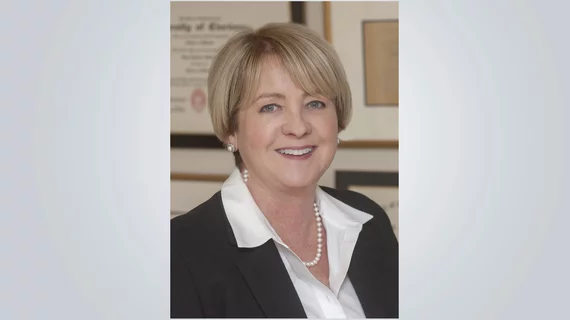RSNA21: COVID-19 has exacerbated isolation in radiology, but offers clear paths to broaden its reach
CHICAGO—Technology and the COVID-19 pandemic have deepened professional isolation in radiology. But artificial intelligence and other advances in IT will also help the specialty become more patient-centered, personable and reach its full potential.
Mary Mahoney, MD, explored these themes Sunday during her presidential address kicking off the Radiological Society of North America’s annual meeting. Technology has offered radiologists many advantages, allowing them to perform their work at home and collaborate with colleagues remotely. However, those advances have come at a price, Mahoney said, “drastically” reducing the need for in-person interaction.
“Many radiologists find themselves working in a vacuum. As a result, the dynamic of the work environment has suffered,” she told attendees Nov. 28. “We are less collegial. We are more internalized. We have become disconnected from our colleagues, our teams and our patients. And COVID-19 safety measures have only exacerbated this situation.”
The pandemic has had a tremendous impact, with providers across the globe all experiencing this “monumental health crisis” simultaneously. And yet, “we’ve never felt more alone,” Mahoney said. She sees the very same technology as a tool to end this isolation and serve as the “GPS” that helps radiology navigate the road ahead. Once a source of fear, artificial intelligence has proven to be a boon for radiology, Mahoney said. Technology is only helping to improve workflows and lighten the load of menial tasks, freeing up physicians to spend more time with patients.
“When not burdened with a backlog of casework, we can pursue meaningful interactions with our patients and their families,” said Mahoney, who is also a professor and chair of radiology at the University of Cincinnati. “For too long, radiologists have focused on the image at the expense of the person.”
She urged peers to not just view patients as compilations of images. Rather, radiologists should balance the science of imaging with the “art of care.” Patients are more involved than ever before and oftentimes turn to the web for answers, instead unearthing mounds of misinformation. Radiologists can help them by improving their online presence through patient portals, practice websites, social media and health information sites.
Members of the specialty must also communicate to patients in language they can easily understand. Providing patient-centered care requires radiologists to consider all aspects of the interaction, including billing, follow-up, reception and more.
“We’re doing a disservice to our patients if we simply describe findings in our reports,” Mahoney said. “We need to add context to our reporting. We need to provide value.”
Collaboration with other departments, hospitals, practices and international peers will also help reduce this isolation and add to radiology’s value. Mahoney has been heartened to see members of the profession from across the globe come together to share images and lessons learned related to the pandemic. Radiologists must seek out opportunities to collaborate, broaden their reach and break down barriers between different parts of medicine in order to reach their highest potential.
“COVID-19 has reminded us that we cannot be siloed in terms of institutions, countries or even continents. We are all part of a large global system, and we are strongest when we work together,” she told attendees.

